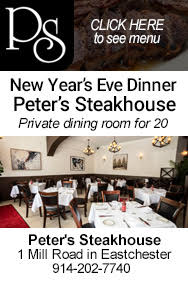Village Trustees to Consider Paving the Yellow Brick Road on Park Avenue at Trustees Meeting Monday, September 8

Sep. 3, 2014: Next Monday, September 8, the Bronxville Board of Trustees at its monthly meeting will consider whether or not to pave the yellow brick road on Park Avenue running downhill and eastward from Wellington Circle to Tanglewylde Avenue.
The short road, which has a 400-foot incline, was paved with yellow hillside brick in 1916. After nearly 100 years of use, the street has become "high-centered" between deep tire-track grooves. In addition, a chronic unexplained underground water seepage creates icy conditions in winter and generally weakens the roadbed. Many of the bricks have cracked and cannot be salvaged.
The Bronxville Department of Public Works estimates the basic cost of rebuilding the Park Avenue roadbed and controlling the water condition to be $253,799 before any paving or bricklaying is done. Installing an asphalt surface brings the total to $304,339, while installing brick brings the total to $369,649 (plus the cost of brick).
In an effort to reduce the costs to the community, The Bronxville Historical Conservancy, which strongly opposes paving the street, has committed $67,500 to buy the bricks to replace the worn-out ones. Conservancy Co-Chair Bill Dowling urges the trustees to base their decision not on the extra upfront expense, but rather on the long-term cost benefits of brick, as well as the importance of "maintaining an historic aspect of the quality of life in this village."
According to Anderson Kenney, an architect who serves on the Conservancy board, "a properly installed brick road can last for 100 years" without significant maintenance. It would have substantially lower ongoing costs than asphalt, which requires frequent maintenance and resurfacing.
The yellow brick roads in the village, according to local lore, were built throughout the Lawrence Park Hilltop by William Lawrence in the 1890s. Research by Eloise L. Morgan, village historian, however, found that the brick was installed in 1916 and 1922 and only on a few of the steepest slopes on the Hilltop. All of the bricked roadways are part of Bronxville’s National Historic District.
The Conservancy found in the process of investigating where to buy replacement bricks that communities around the country are increasingly recognizing the value of preserving their original brick streets both from the historical perspective and the demonstrated savings in maintenance costs. Municipalities that have ordinances against paving over brick roads or have programs to restore their brick streets include Boston, Nantucket, Charleston, Savannah, and Orlando, Florida. Wilmette, Illinois, has an active program of uncovering and restoring brick roads that have been overlaid with asphalt.
Pictured here: The yellow brick road in question—Park Avenue.
Photo by Bill Dowling
Government & History Directory
Bronxville is a quaint village (one square mile) located just 16 miles north of midtown Manhattan (roughly 30 minutes on the train) and has a population of approximately 6,500. It is known as a premier community with an excellent public school (K-12) and easy access to Manhattan. Bronxville offers many amenities including an attractive business district, a hospital (Lawrence Hospital), public paddle and tennis courts, fine dining at local restaurants, two private country clubs and a community library.
While the earliest settlers of Bronxville date back to the first half of the 18th century, the history of the modern suburb of Bronxville began in 1890 when William Van Duzer Lawrence purchased a farm and commissioned the architect, William A. Bates, to design a planned community of houses for well-known artists and professionals that became a thriving art colony. This community, now called Lawrence Park, is listed on the National register of Historic Places and many of the homes still have artists’ studios. A neighborhood association within Lawrence Park called “The Hilltop Association” keeps this heritage alive with art shows and other events for neighbors.
Bronxville offers many charming neighborhoods as well as a variety of living options for residents including single family homes, town houses, cooperatives and condominiums. One of the chief benefits of living in “the village” is that your children can attend the Bronxville School.
The Bronxville postal zone (10708, known as “Bronxville PO”) includes the village of Bronxville as well as the Chester Heights section of Eastchester, parts of Tuckahoe and the Lawrence Park West, Cedar Knolls, Armour Villa and Longvale sections of Yonkers. Many of these areas have their own distinct character. For instance, the Armour Villa section has many historic homes and even has its own newsletter called “The Villa Voice” which reports on neighborhood news.
Link to Village of Bronxville One Square Mile Monthly Newsletter
Village of Bronxville Administrative Offices
337-6500
Open 9:00am - 4pm excluding holidays and weekends
Bronxville Police Department
337-0500
Open 24 hours
Bronxville Parking Violations
337-2024
Open 9:00am - 4pm excluding holidays and weekends
Bronxville Fire Deparment
793-6400













